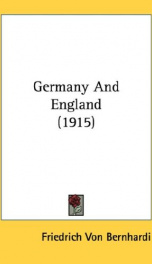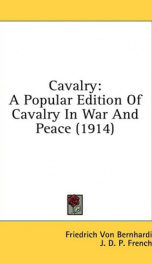cavalry in war and peace

Purchase of this book includes free trial access to www.million-books.com where you can read more than a million books for free. This is an OCR edition with typos. Excerpt from book: prove that this is the direction where the most friction is to be overcome, and where hy far the most difficult part of our task will lie. The chief considerations for training are naturally evolved from the duties to be performed in war itself. The services of reconnaissance and security come first. The technique of these services and the method of fighting necessary for carrying them out must be fully mastered by the troops right down to the individual soldier. Next in importance come undertakings against the enemy's communications, and the participation in the battle which war will demand of our arm. These are the matters which must be studied by those who undertake to discuss methods of training. We must be perfectly clear in our minds what duties in the various spheres of action will fall to the lot of the arm as a whole, to its sub-divisions, or to its single members. The relative importance of these duties must be our guide in considering the essentials of training. A. RECONNAISSANCE, SCREENING, AND RAIDS I. BECONNAISSANCE BY THE ARMY CAVALRY The very essence of cavalry lies in the offensive. Mounted it is incapable of tactical defence, but, in order to defend itself, must surrender its real character as a mounted arm and seize the rifle on foot. The service of reconnaissance, therefore,must necessarily be carried out in an offensive sense. The idea of the offensive is not, however, meant here in a narrow sense, such as seeking a tactical battle, but rather that the reconnoitring army cavalry must under all circumstances maintain the initiative, use its activity against the enemy, and impose its will upon him. It is by no means its duty under all circumstances to seek out the enemy's cavalry in order to defeat it. By such conduct it would allow the enemy's caval...
Info about the book
Author:
Series:
Unknown
ISBN:
0865477272
Rating:
3.5/5 (3)Your rating:
0/5
Languge:
English
Users who have this book
Users who want this book
What readers are saying
What do you think? Write your own comment on this book!
write a commentif you like cavalry in war and peace try:
Other books by this author
Do you want to exchange books? It’s EASY!
Get registered and find other users who want to give their favourite books to good hands!






